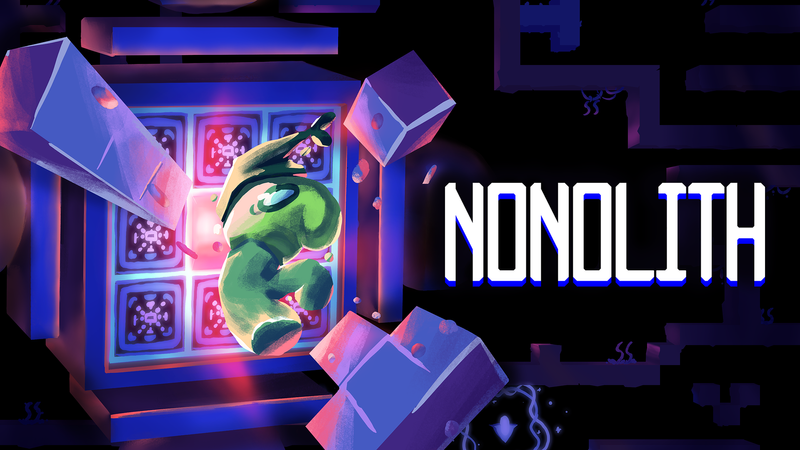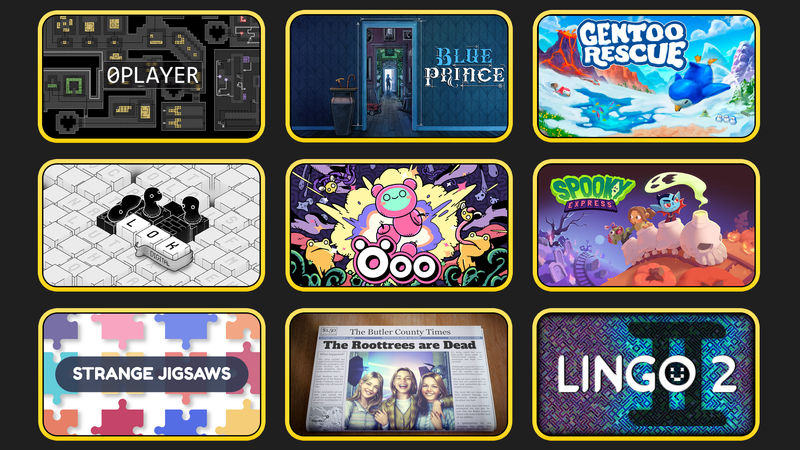There are two possible ways you might approach Mind Over Magnet. You might come to it knowing it was developed by Mark Brown, creator, host, and general brain behind the YouTube channel Game Maker’s Toolkit. Or you might come to it without that knowledge. Then again, if you’re reading this sentence, it’s likely you also read the first one, which rather confusingly means you now know the thing I just stated you might not.
In any case, the extent of your understanding of Mind Over Magnet’s development is likely to influence your feelings on the final game. If you come to it purely as a puzzle gaming fan, you’ll likely find it a pleasant but somewhat limited puzzler that has some neat ideas but doesn’t explore them as thoroughly as it could. If you come to it as a Game Maker’s Toolkit fan, then you may view it as the fascinating final product of a project you’ve watched its creator wrestle with for years.
Either way, Mind Over Magnet has players assume the role of a robot named Uni lost in the bowels of a factory, the products of which are as mysterious as the mechanisms by which they are produced. With a monitor for a head and propelled by a single wheel, your little robot isn’t good for much beyond doing small jumps and picking stuff up. That is, until you team up with a cheery talking magnet called Magnus, who helps you navigate the factory’s many floors through the power of friendship! Sorry, I mean magnetism (but also friendship).
Magnus can be used in one of two ways, only one of which involves his magnetic personality. You can place him on pressure plates to activate whatever it’s connected to, such as drillbit-like doors that corkscrew open and closed. In addition, Magnus will be attracted to large metal bars suspended above the level, the direction and boundaries of their pull signified by flashing blue columns. If Uni is holding Magnus upon entering the magnetic field, they will be lifted as well.
Your goal in each single-screen puzzle is to reach a vacuum tube blocked by a stopper. Crucially, when you pull out the stopper, it will suck both you and Magnus to the next level, regardless of where the latter currently sits in the current puzzle-space. This means, for example, that you can place Magnus on a pressure plate to bypass obstacles, and leave him there while still progressing to the next stage.
If all this sounds a bit basic, then yes, Mind Over Magnet takes about an hour before the puzzles start to get interesting, which is a long time considering you’d struggle to make it last longer than four. The first chapter focuses on introducing you to Max and Uni, while the second is mainly oriented around filling out the puzzling fundamentals. And because you can only place Magnus in one position, and his magnetism limits him to travelling up or down, puzzles in these initial chapters can only have one or two phases to them.
In the third chapter, however, you meet a new magnet called Min, and at the same unlock the ability to throw magnets, which gives the puzzles a bit more room to evolve. Mind Over Magnet only truly finds its feet when you unlock the third Magnet. This lets you switch magnet polarity between Min and Max, making the magnet rise or fall relative to the polarity of the magnetic field it’s in.
This makes for by far the most satisfying conundrums. Some puzzles may require you to throw the magnets through a magnetic field, then quickly switch polarity to let the magnet pass through one field but stick to the next. Other essentially turn the magnet into a switch, with the magnetised metal bar connected to a lever or a pulley system that turns a puzzling object on or off when Min/Max connects with the bar and pulls it down. One simple but memorable puzzle requires you to play accidental Flappy Bird, by leaping off a ledge magnet-in-hand, then repeatedly swapping polarity to zigzag over a bed of spikes.
I should point out that, throughout all this, Mind Over Magnet is never less than a good hang. The script is written with a genial tone and gentle humour. There’s a fun implied joke wherein Min initially distrusts Uni when the two are introduced, which makes it rather awkward that the first thing you do with her is cob her across the room like a cricket ball. There’s some pleasing tactility behind its simple presentation too, from the slight inertia with which Uni moves, to the definitive clunk of magnets connecting with metal surfaces.
Nonetheless, I felt like I spent most of my time with Mind Over Magnet waiting for it to get to the good stuff. I does eventually get there, with several later puzzles extracting an ‘Aaaaahhhh’ from me when I figured the solution out. But just as I thought Mind Over Magnet had begun to express its true potential, it ended.
To be clear, this isn’t a simple case of the game being too short, although I would happily have played another few hours’ worth of its puzzles. The problem is its introduction of new ideas is very piecemeal, similar in approach to a game like Portal. But the core mechanic simply isn’t as novel or arresting as Portal’s Euclid-snubbing conceit (and to be completely fair, what is?) so Mind Over Magnet needs more supplementary ideas around it to give the puzzles some bite. It does add these things, but too gradually and too cautiously, and as such you rarely feel like you’re playing with the training wheels removed.
I’ll also say that the overarching story doesn’t really go anywhere. The mystery behind the factory and what it produces is waved away in a joke rather than grappled with in any meaningful fashion, and while there are light themes of worker solidarity and the spectre of automation in the workplace, they’re not explored in any great depth. This isn’t as much of an issue as the overcautious puzzle evolution, and would be less notable still if Mind Over Magnet more keenly expanded upon its ideas. But the result is the climax is as narratively abrupt as it is systemically, and as such you can’t help but feel a little deflated when it finished.
All that said, Mind Over Magnet is a smart and affable puzzler, while its flawless Steam Deck compatibility makes it a perfectly acceptable way to curl up on the sofa for a quiet evening. I’ll also say that my eight-year-old daughter was utterly entranced by it, so it may be a game worth trying if you want to peel your kids away from Roblox or Fortnite for a few hours. Finally, playing with the commentary enabled has arguably even greater value than in other games, as Mind Over Magnet was designed with an inherent self-awareness about communicating its own construction.















